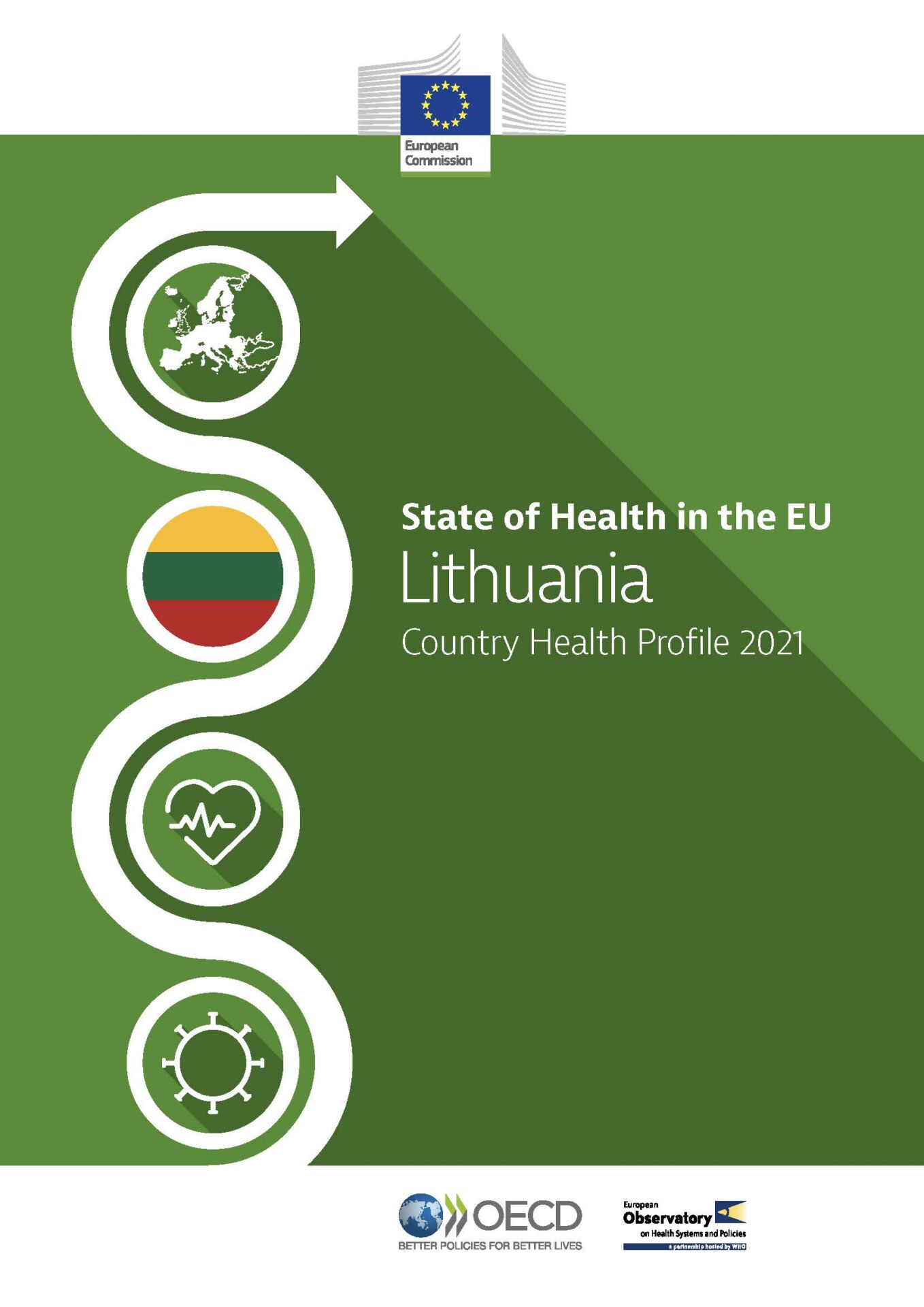After years of steady gains in population health, the high mortality registered during the Covid-19 pandemic in 2020 in Lithuania temporarily caused a large drop in life expectancy of 1.4 years compared to 2019. The pandemic is also likely to undermine progress in disease prevention by disrupting priority programmes for the early detection of chronic conditions and cancers.
Longstanding challenges remain, such as low uptake of health promotion measures, uneven distribution of human resources, weak primary care and varying quality in specialist care.
Covid-19 gave a major impetus to the rapid further development of e-health, by transforming digital services, data collection and reporting.
Lithuania’s health status
Life expectancy in Lithuania in 2020 was the third lowest in the EU and 5.5 years below the EU average. Although the increase in life expectancy between 2010 and 2019 in Lithuania was the fastest in the EU, the impact of Covid-19 was a major setback, with 17% more deaths registered in 2020 than 2019. Fewer than half the population, and only one quarter of low-income households, reported being in good health – the lowest shares in the EU.
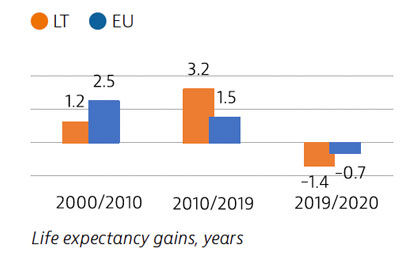
Risk factors
Adolescents in Lithuania are more affected by risk factors such as smoking and excessive drinking than the average in the EU. Alcohol consumption remains a major public health issue, even though consumption levels fell by one quarter between 2012 and 2019 due to stricter alcohol control measures targeting younger people.
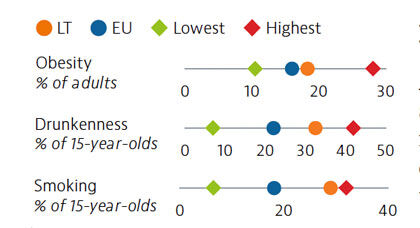
Lithuania’s health system
Health expenditure in Lithuania in 2019 is comparatively low, at just under €1,900, but it has grown slightly faster than the EU average. The share of out-of-pocket spending in total is double the EU average, at 32% in 2019. In 2020, a large share of the health insurance fund reserve was used to cope with the impact of Covid-19 on the health system.
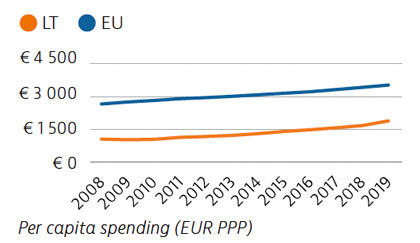
Effectiveness
Treatable mortality in Lithuania was double the EU average in 2018, as effectiveness of primary and hospital care lags behind many EU countries. The Covid-19 pandemic caused major disruption for disease prevention programmes tackling cardiovascular diseases and treatable cancers, as well as for planned specialist care, but mental healthcare provision was enhanced.
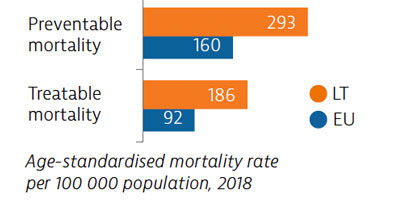
Accessibility
Despite comparatively low unmet needs before 2020, 26% of Lithuanians reported forgoing medical care during the pandemic, although many used teleconsultations for the first time. Out-of-pocket payments and the limited availability of healthcare workers outside the major cities also contributes to inequitable access.
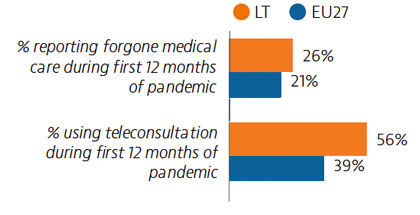
Resilience
The ability to use beds flexibly and redeploy healthcare workers helped Lithuania to cope with surges in demand during the pandemic, albeit by severely limiting non-Covid-19 service provision. Vaccination rollout has been on par with the EU average, with 61% of the population receiving at least one dose and 55% receiving at least two doses or equivalent by the end of August 2021.

OECD/European Observatory on Health Systems and Policies (2021), Lithuania: Country Health Profile 2021, State of Health in the EU, OECD Publishing, Paris/European Observatory on Health Systems and Policies, Brussels.









